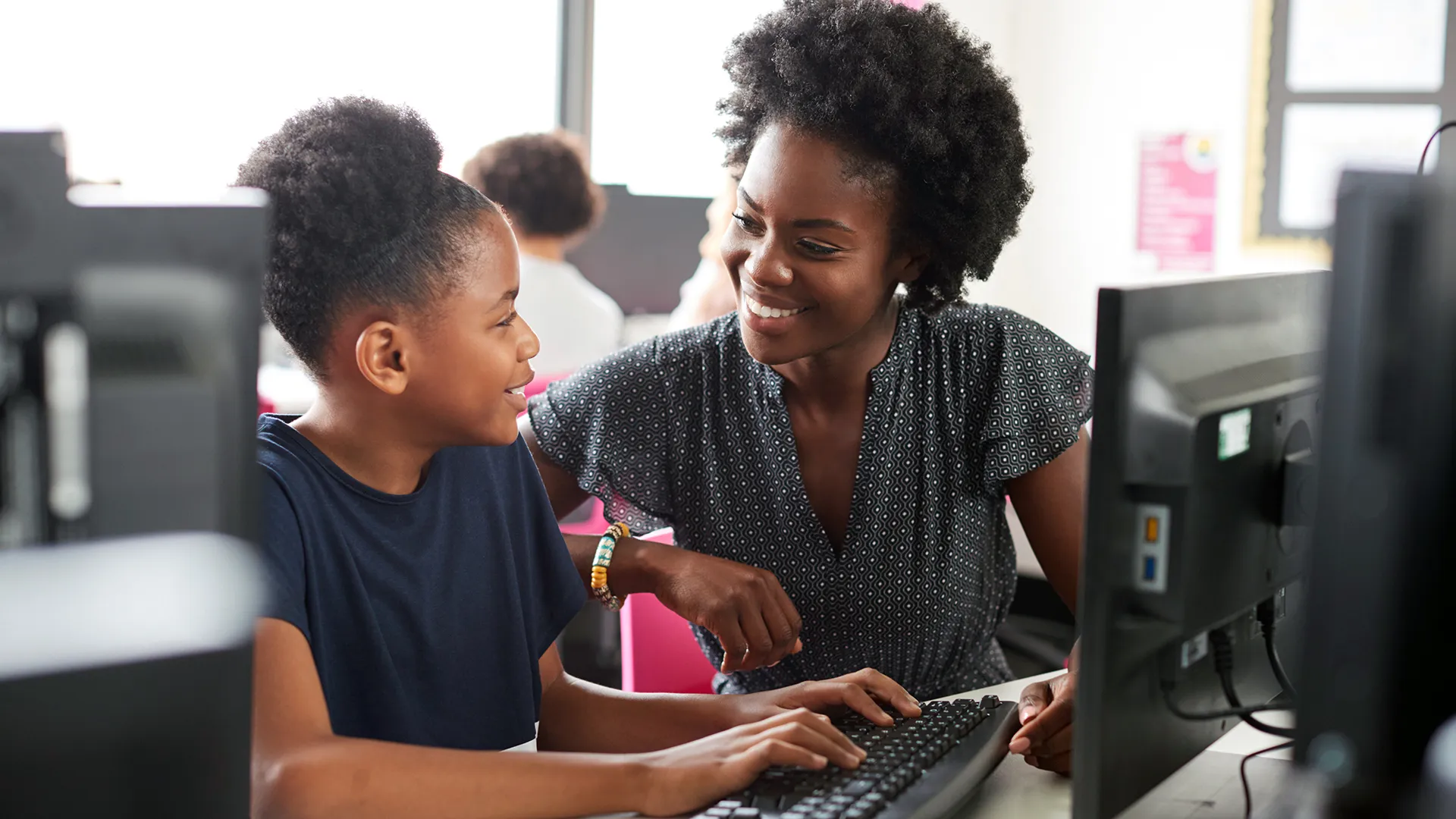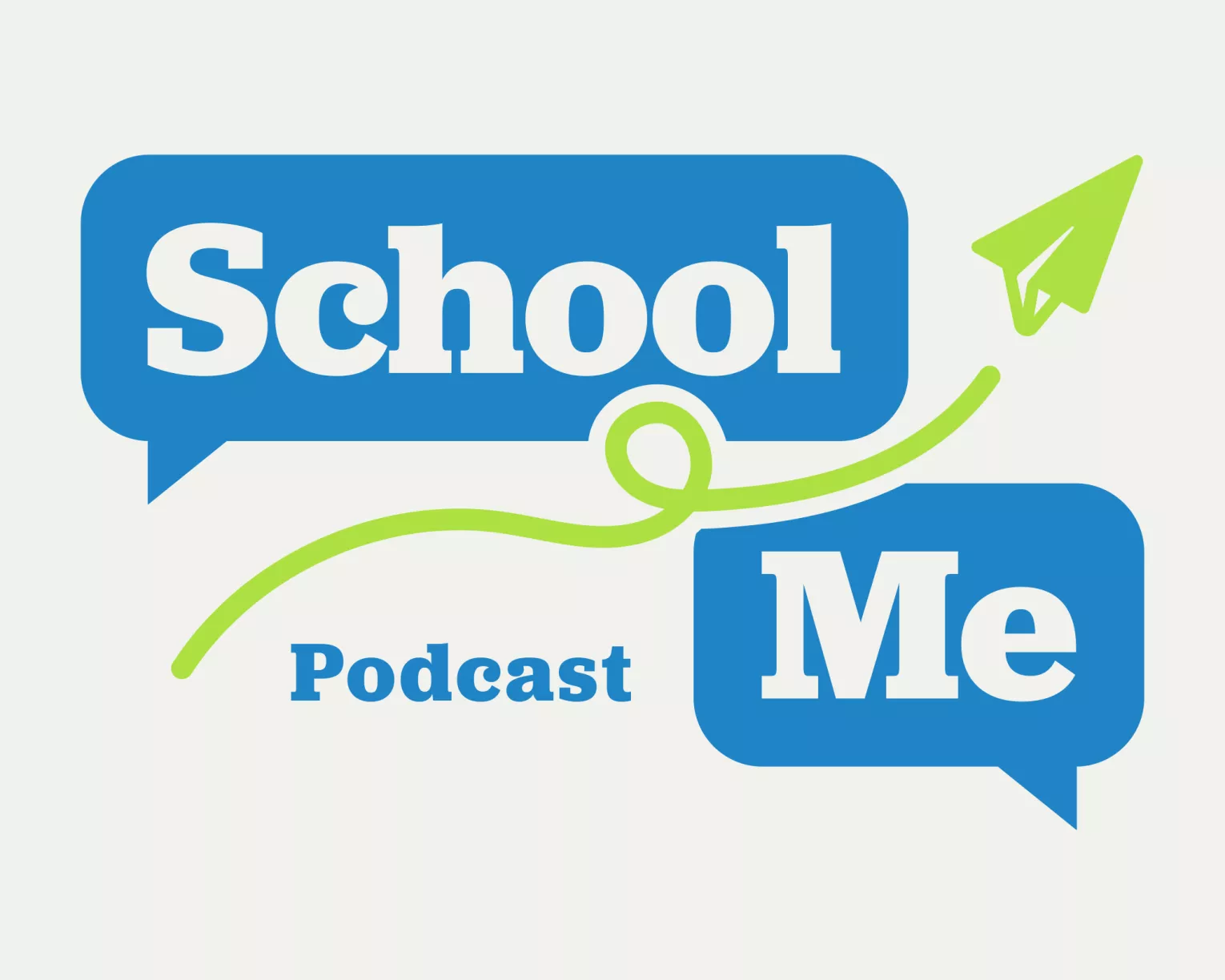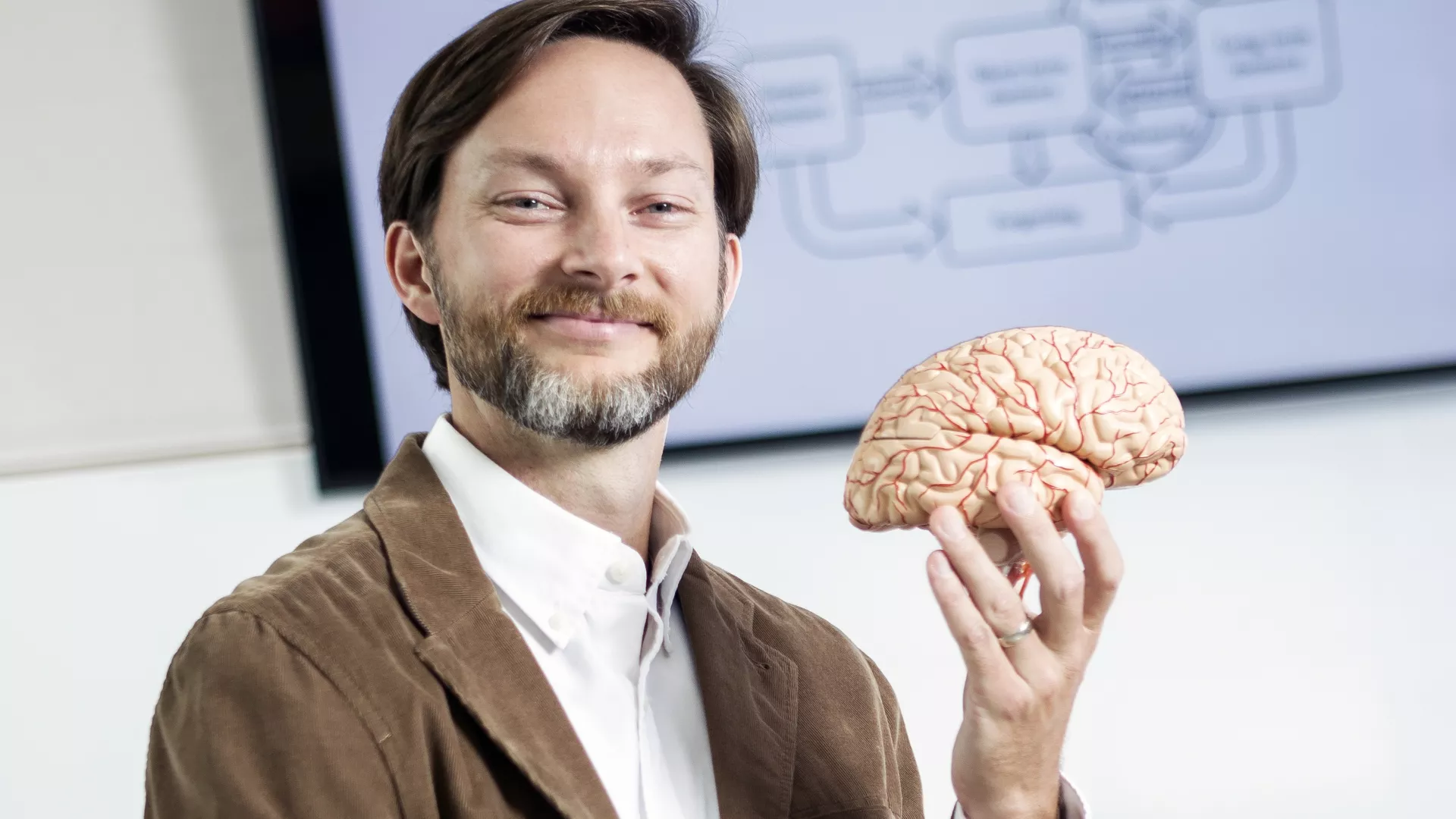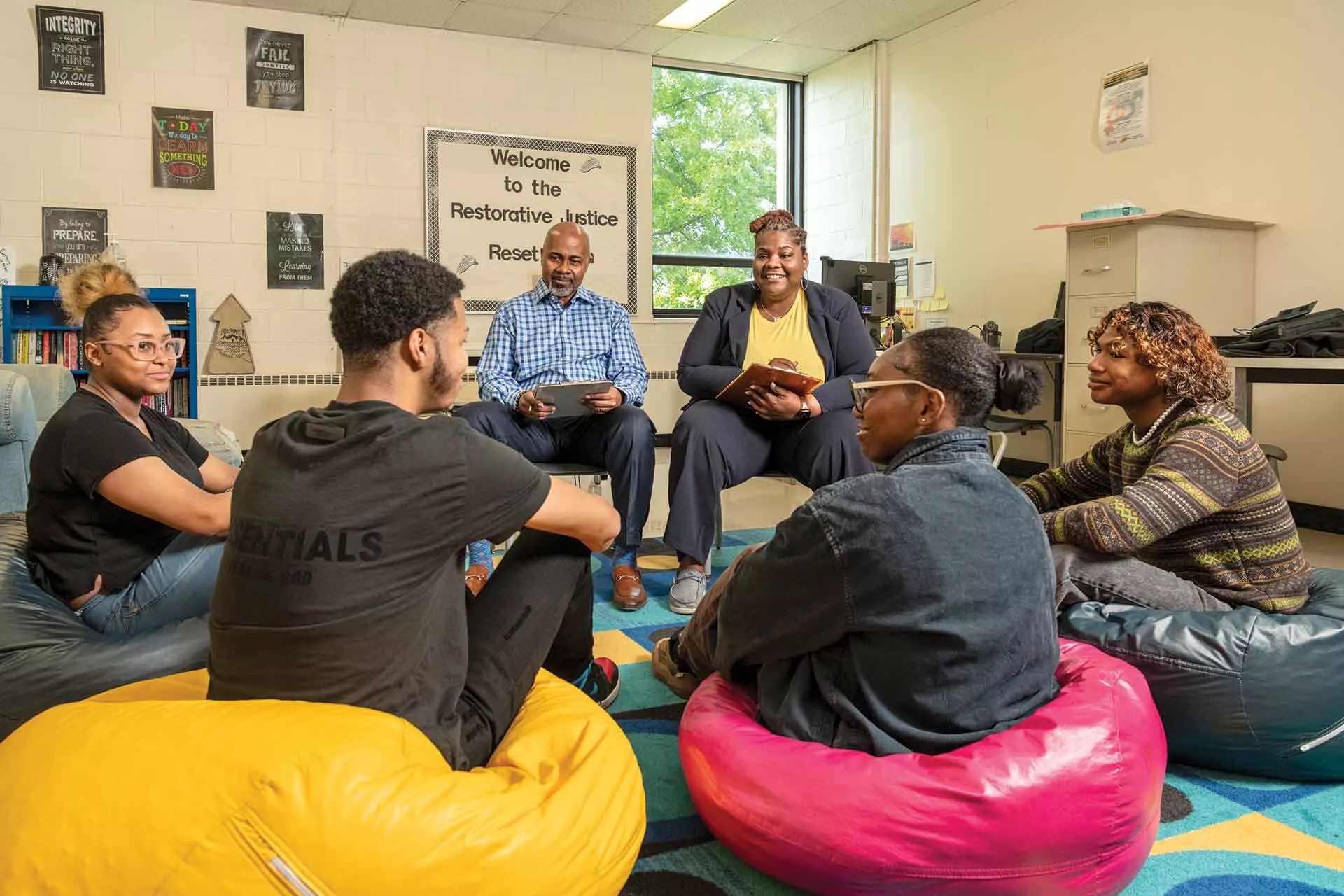Teaching Kids the Science of Perception, Misinformation, and Disinformation

Section with embed
Jacqueline B. Toner is a trained clinical psychologist and author of more than 10 books for young readers, including True or False? The Science of Perception, Misinformation, and Disinformation. Her book is an NEA Read Across America-recommended book for middle-grade students that teaches them about the brain in order to help them recognize misinformation and disinformation. In a world where false claims can spread faster than ever, how can we help kids build the skills they need to sort fact from fiction?
Transcript
Transcripts are auto-generated
Jacqueline (00:03):
I just wanted kids to understand why messages from advertising or from rumors and gossip or from other people's testimonials and opinions, or even things that you see in entertainment are so easy to believe when they're not true. And of course, it all gets supercharged when you bring in the internet and social media. The vulnerabilities are even more extreme in those kinds of settings.
Natieka (00:32):
Hello and welcome to School Me, the National Education Association's podcast dedicated to helping educators thrive at every stage of their careers. I'm your host, Natieka Samuels. Today, we're tackling a topic that affects all of us every day and has become increasingly concerning through the rise of social media, misinformation and disinformation. In a world where false claims can spread faster than ever, how can we help kids build the skills they need to sort fact from fiction? Our guest today is Jacqueline B. Toner, a trained clinical psychologist and author of more than 10 books for young readers, including True or False?: The Science of Perception, Misinformation, and Disinformation, which is a Read Across America recommended book for middle grade students. Thank you so much for joining us today, Jackie.
Jacqueline (01:17):
Thank you for inviting me.
Natieka (01:18):
Let's get started with talking just a little bit about you and your work.
Jacqueline (01:22):
I am a retired clinical psychologist. I practiced therapy and evaluating kids and teenagers for about 35 years. And then toward the end of my career, I started writing books for kids and teens on psychology topics. Many of them were sort of therapy oriented, but more recently I've been writing science-based books around the science of psychology.
Natieka (01:47):
So you had a long career working as a clinical psychologist before becoming an author. So can you talk a bit about what inspired you to start writing books for children?
Jacqueline (01:57):
Well, initially as I was reaching retirement, I really wanted to contribute my experiences with kids in a more ongoing way. And so I started working with a colleague to write some books about different types of anxiety that children have, and those are used by teachers, by parents, and by therapists. I also wrote a book with my daughter who's a pediatric physical therapist about how young children can make friends with a child in a wheelchair. And I've written a book on depression for teenagers. And then more recently, I wrote a book about the science of psychology because it struck me that kids don't really get introduced to the science of psychology until they're in high school, and then usually only if they're in advanced placement kind of program.
(02:45):
And it seems to me that psychology is pretty interesting, even for kids. It's really trying to find out about themselves and kids are introduced to all other kinds of science. So I felt like it was important to introduce younger kids to psychology. So my partner and I wrote a book, basically a science textbook for middle grade kids, and then I wrote this book, which goes into the science behind why we believe things that aren't true, what it is about our brains that makes us vulnerable to being fooled into thinking that things are true that are not. I've also more recently written a science book for elementary school kids about sensation and perception, which just came out in August.
Natieka (03:29):
Is there a moment or experience in particular that inspired you to write a book about the way you just described it now doesn't necessarily say media literacy, but the way that I understand it is media literacy for children. So was there a particular media message or trend that made you think that kids need help understanding this?
Jacqueline (03:50):
No, and in fact, I didn't even see it when I started writing it. I didn't see it as a media literacy book at all. I just wanted kids to understand why messages from advertising or from rumors and gossip or from other people's testimonials and opinions or even things that you see in entertainment are so easy to believe when they're not true. And of course, it all gets supercharged when you bring in the internet and social media. The vulnerabilities are even more extreme in those kinds of settings.
Natieka (04:23):
Why did writing books for children feel like a right path for you in your career?
Jacqueline (04:29):
I had always worked with children, with kids, and I really, really enjoy kids, and I just feel like I still have more to teach them in a different format than I have before. And I really like writing books like this because it was really fun doing the research. I learned a lot in the process. There's a lot of going over research studies and things that was required by the book, and I find it interesting to keep learning myself.
Natieka (04:56):
The book is called True or False?: The Science of Perception, Misinformation and Disinformation. So can you explain the difference between misinformation and disinformation and why that distinction matters?
Jacqueline (05:09):
Misinformation is just information that is wrong and it can come from innocuous sources. So misinformation can come from somebody spreading a rumor or innocuous things like hearing about a superstition and believing it or reading something and getting the wrong idea about it. Reading a science study and misinterpreting it can all lead to misinformation. Disinformation is more nefarious. Disinformation is incorrect information that somebody else is promoting for their own purposes.
Natieka (05:42):
So it's sort of the intent behind it?
Jacqueline (05:44):
Yeah.
Natieka (05:44):
Or lack of intent that defines it?
Jacqueline (05:46):
Yeah.
Natieka (05:47):
So one of the ideas that you write about is how our brains at any age are efficient but prone to errors. How does that make us vulnerable to believing things that aren't true?
Jacqueline (05:59):
So our brains are inundated all the time with so much sensory information, and we would be completely overwhelmed if we couldn't pick and choose what we paid attention to and processed. Our brains are also really good at tying what we're experiencing now to past experiences, to put things together so that we don't have to reinvent the wheel every time we have a new experience, we can rely on past experiences. In the process of doing that, a lot of information is lost. It's been estimated that we probably only actually process 10% of the information that comes into our senses and that's necessary for us to function. Our brains are very efficient in that way and they're very remarkable in that way. But it also leaves us prone to error. Sometimes we block out things information that we need. Sometimes perceptions are distorted by the information that we block out or that we don't process. Sometimes we tie new information to old information in ways that don't make sense. Sometimes we see patterns that aren't really there because our brains rely a lot on pattern recognition in order to make sense of the world.
Natieka (07:09):
That makes sense. And it's also a little scary to think that your brain, which you rely on your whole life to work for you is sometimes working against you. That's I guess just the truth. How do you teach kids to question what they see without making them overly skeptical or anxious about their whole life?
Jacqueline (07:30):
So one of my goals with the book, and I hope that I achieve it, is to kind of pull back the curtain on the processes of the brain and how it functions and doesn't function. And to look at what research of psychology can tell us about the kinds of errors we're prone to make so that kids can be more aware of how they may be processing information incorrectly and question things that they hear and see in an informed fashion by knowing ways in which they're likely to be misled.
Natieka (08:00):
So is there one myth or misconception that kids or even people in general often believe and maybe multiple examples you might have, and how do you help them unlearn those misconceptions?
Jacqueline (08:14):
So one of the examples that I talk about that adults get surprised by too is the idea that everybody knows that sugar makes kids hyper, and that actually isn't true. That idea came from research done by Dr. Feingold who was interested in possible allergies to food additives that might be causing attention deficit hyperactivity disorder, ADHD, and he was looking at things like food coloring. He wasn't looking at sugar, but it made people stop and think about, "Well, what's in a lot of foods that kids like to eat?" And sugar is in a lot of foods that kids like to eat.
(08:54):
So people started concluding that sugar must make kids hyper, and that was widely discussed and shared with people. And this was in the 1970s. There have since been lots of research studies done on sugar intake and children's activity levels, and in 1995, there was a huge review of all the literature and it was concluded that there was absolutely no evidence that sugar makes kids hyper, but parents think it does. Grandparents think it does. Kids think it does. Even doctors think it does. So it speaks to how sticky these incorrect ideas are. They're very hard to shake.
Natieka (09:34):
Without getting too medical about it, what do you feel like are the dangers of believing a concept like that even though it's not true?
Jacqueline (09:41):
That one is probably less innocuous than others because I don't know that limiting sugar is a bad thing, but there are other misconceptions and false ideas that can be more troubling. We definitely saw that during COVID where there were false information that people believed that led them to reject what scientists were saying and probably increase the number of people who died. Now, we're talking about some issues with rejecting the scientific basis for vaccine use. So wrong ideas can be dangerous.
Natieka (10:16):
Do you see your book as political? Are others who discuss your book marketing it as political or even just presenting it as a political book?
Jacqueline (10:28):
I did not think it was a political book when I wrote it, but apparently it's an extremely hot political book. So what troubles me is the notion that we are in a world where truth is no longer something that we all hold dear. I'll stick my neck out and say, I think there are people who are very troubled by the idea of somebody talking to children about questioning the things that they're told.
Natieka (10:52):
Your book is the September 2025 middle grade level pick for Read Across America, which is a really great program that NEA recommend books for diverse readers that have diverse perspectives. Why do you think that this book in particular, understanding perception, misinformation, disinformation, media literacy, however you want to talk about the concepts in the book, how do you feel that those skills are so important for a diverse school, country or world?
Jacqueline (11:26):
Can I read you an example?
Natieka (11:28):
Sure.
Jacqueline (11:28):
In each of the chapters, there are a lot of features within the book, and one of the features is to talk about the real world impact of the information that is being presented or the concepts that have been presented. So let me read you one of them and maybe it will give you an idea of why I think this is important. So we're talking about the concept of confirmation bias, which is where we only look for information. We tend to look for information that confirms things that we already believe and ignore things that challenge our beliefs or that would make us think twice about something. Confirmation bias can make it hard for stereotypes to be corrected by later experiences. When incorrect ideas include negative views of entire groups of people, it can lead to racism, anti-Semitism, anti-LGBTQ attitudes, hatred, and other forms of discrimination, stereotypes and implicit bias can also limit opportunities for those who use wheelchairs to get around or blind, deaf or older and may set unfair obstacles in the way of achieving goals or making preferred life choices.
Natieka (12:39):
You also introduced the concept of pre-bunking in your book. So what is pre-bunking and how might people use it in their daily life or how might teachers use it in a classroom setting?
Jacqueline (12:55):
So it's really, really hard to change many beliefs that are held that are not true, and research suggests that the best way to prevent people from believing falsehoods is what's called pre-bunking. And pre-bunking is to warn somebody that an incorrect message is coming to them and to tell them who's going to present it and why. So an example of this is during about the time that Russia attacked Ukraine, there was disinformation that was put out by Russia that Ukrainians had attacked Russians. The US found out about it. They said, "This is coming. It's false. You're going to hear this, and it's bunk." And people didn't believe it. It's very, very hard though to anticipate what children are going to hear that isn't true.
(13:41):
You can't sort of travel through time and go back and say, okay, you're going to hear this when you don't know what they're going to hear. So one of the reasons that I wrote the book is what I like to think of as procedural pre-bunking. Okay, I can't tell you what you're going to hear, but I'm going to tell you how you might hear things or who might present things or ways in which you might be influenced that may protect you from being so easily influenced. It's not 100%, it won't work all the time, but if it works a small part of the time, I will have made a difference.
Natieka (14:11):
And what are some of the skills or exercises that you encourage kids to go through in this book that help them get to the kernel of what the truth might be in anything that they're hearing or seeing?
Jacqueline (14:25):
The end of the book does summarize all the things to be on the lookout for, but this is after the whole book introducing to kids things that may fool them. So I'm introducing them to concepts and terms like cognitive dissonance, confirmation bias, familiarity bias, which is that we tend to believe things or accept things that we've heard numerous times. Introducing the difference between correlation and causation. Talking about what stereotypes and self-fulfilling prophecies are. The idea is to help kids to say to themselves when they hear something, wait a minute, could that be true? Is that not true? Are those two things something that happened together? Is it a correlation or did the first thing cause the second thing? And how can I tell? And just making them more sophisticated about processing information.
Natieka (15:16):
And your book is presented on the Read Across America calendar as appropriate for middle grade level kids. And for anybody who has not seen the book, it's like an animated cover. So it definitely has a younger look about it. It doesn't look like a textbook, right?
Jacqueline (15:32):
Right.
Natieka (15:33):
About what age a child do you think this is appropriate for? And some of these concepts seem very mature, and I know that we can have a lot of faith in kids to understand things, but these seem like very adult themes in terms of we can all use a little primer on this. How do we understand what kids are understanding when they read these complex contexts?
Jacqueline (15:54):
So I try as much as I can to use examples that kids can relate to. I try to add some humor. Some of what we've talked about sounds extremely serious in adult, but I try to present the ideas in ways that are more relevant to kids and more entertaining for kids. For example, when I'm talking about superstitions or myths that people can believe, I start off by talking about wearing backwards PJs and why in snowy places when the kids are hoping for a snow day, they have everybody wear their pajamas inside out and backwards because we all know that that leads to heavy snowstorm and you get off of school. Then I also try to pick out interesting research that is, again, entertaining as well as informative. So one of my favorite research studies of all time is what's called Gorillas in the Mist.
(16:45):
I don't know if you're familiar with that one, but it's where research subjects were shown a video of people playing basketball, and they were told there were people in white shirts, and I think the other team had red shirts, and they were told to count the number of times that one of the teams passed the ball, and half of the subjects miss the fact that somebody in a gorilla suit walked through the game in the middle of it. It's an important study because it says, "Look, we miss a lot of what we see. We don't pay attention to everything. We really even miss some really important things." But it's a study that does so in an interesting way that I thought would appeal to kids.
(17:23):
There's other research study that talks about how our memories are not movies of what we have experienced, that our brains act on them and sometimes distort our memories. So there's a study that was done where people were shown a picture of themselves in a hot air balloon, except that the picture had been changed. It was actually a picture of other people and their childhood face had been superimposed on the picture, and a large number of the people then reported having gone up in a hot air balloon when they were a child. So it planted memories that they never had. Now, that's a very entertaining study, but it also raises questions about things like eyewitness reports and crimes. Did people see exactly what they say they saw?
Natieka (18:12):
And that brings up to me immediately just hearing that thoughts about artificial intelligence. Now, I don't know if you covered that at all.
Jacqueline (18:20):
I mentioned it because it was not a thing when I was writing the book. Writing a book is a long process. That's scary.
Natieka (18:29):
Yeah, it is. Because I think about it in terms of social media filters where it can make your face look different ways, and people talk about how that can skew your view of yourself because you're seeing yourself in a screen look a certain way, but not in the mirror, which is in itself a distortion. Right? But AI and the general digital and social media world, do you think that being born in this time makes kids naturally a little bit more or less media literate? Does it make it more vulnerable? It's not like all of your book is about the internet, and obviously people could have been deceived by telegrams, like museum descriptions, magazines, newspapers before.
Jacqueline (19:15):
Right.
Natieka (19:16):
But how do you differentiate between tech-savvy and media literacy when we're just talking about where your whole life is consumed by tech and social media?
Jacqueline (19:27):
I mean, I think that that's hard, and I think it's going to be hard for us to know. It's hard to protect kids when we don't know the impact that things are having on them. I do think it may make kids question more, but I also think it may make all of us, not kids, all of us, much more vulnerable. AI can be pretty convincing and it's new, so we don't know how to protect ourselves from it as well as other kinds of misinformation and disinformation. Yeah, I'm not sure.
Natieka (19:54):
What are some of the risks if young people don't learn how to, I guess, properly question what they see and hear on a daily basis?
Jacqueline (20:04):
Well, I think we're seeing it in our society. I think that people are not knowing who to believe, who's an expert, who's not an expert. What I grew up as the foundations of truth, which was things like science and journalism. And I think that those foundations have gotten rattled, and I'd like us to pull back a little bit and say, we have to agree. We have to agree on some form of reality.
Natieka (20:30):
Looking for more tips, resources, and opportunities to build your professional skills, text POD to 48744 to have the latest sent straight to your phone. Can you share a few excerpts from the book?
Jacqueline (20:42):
This is specifically about how we search for information and how the ways in which we search for information can actually influence the kind of information that we get. There are sections in each chapter called Try This, which are ways for kids to either think more deeply about a topic or actually do some exploration. Try this, what if your friends said, dogs are much better pets than cats? If you love your cat, you might want to prove how wrong they are. Try an internet search to see if you can find evidence. Type in cats are better than dogs. You'll probably find quite a few advantages cats have over dogs. So cats make better pets, right? Turns out your search led you down the confirmation bias path. What happens if you look for evidence to disprove your statement? Try searching dogs are better than cats. Now, can you see how only searching for things that prove your idea might lead to a biased conclusion?
Natieka (21:41):
Yeah, I think that's a really interesting way of describing that. I feel like the internet is very cat dominant, but...
Jacqueline (21:51):
There are some people who like dogs.
Natieka (21:53):
Yes.
Jacqueline (21:54):
I have another one about how sticky ideas can be and how people have trouble changing ideas. So this is under a topic called Did You Know, which are just little factoids. In 2006, the International Astronomical Union downgraded Pluto from its status as a planet. This happened because other objects in the solar system were found that were as large as Pluto, and it really wasn't very planet-like after all. But to most people, Pluto had been a planet since they had first learned about planets. Many people refused to accept that scientists would no longer see it that way. Scientific conclusions change as new discoveries are found. Scientific studies gradually add bits of information to answer big questions. Because of this, new findings may show past understanding needs to be updated. Some conclusions can change with later research. Others are supported by evidence from many sources and are well established. The more evidence from different researchers, the more confidence in the conclusions.
Natieka (22:53):
It was hard for me to let go of Pluto.
Jacqueline (22:56):
It was hard for many people to let go of Pluto. Each chapter ends with a summary of the concepts that have been covered in the chapter, so I can just read you one of the later summaries. Now you know, misinformation can result from accidental errors. Disinformation is sometimes used by people who may make money or get power from pushing false information. Before accepting expert information, it's important to be sure the source has expertise on that topic. Emotionally charged words are sometimes used to distort ideas. Accurate information is sometimes distorted by illogical conclusions, cherry-picking facts, twisting the meaning of scientific findings, presenting misleading numbers to support an argument. Digitally manipulated photographs are a form of disinformation and can be hard to recognize.
Natieka (23:51):
Thank you. What are some of the most common maybe types or themes of mis and disinformation that kids will encounter on a daily basis? So whether that's on the internet or not, what are the things that we're most commonly worried about them getting messages about that aren't true?
Jacqueline (24:10):
I think those are two different questions. I think the types of things that they're most likely to hear on a daily basis have more to do with their interactions with peers and less to do with media per se, in this age group. So that can be bullying statements that distort something that somebody did and make them look foolish. Those types of things that are happening in their real world. One thing that I find worrisome is the movement of influencers, of people on social media who become famous and make money off of convincing people of things that may not be true. And I think kids at this age group are beginning to get introduced to influencers.
(24:54):
Some of them are even trying to become influencers. I do work some with teenagers still, and a surprising number of them want to grow up to be influencers, which frankly I find troubling. And the fact that you may get fooled into believing things that aren't true or that things are good for you, or that you should buy things based on the fact that somebody is charming or attractive or charismatic, and it may not have anything to do with the content of what they're saying. So I think those are things that kids are vulnerable to at this age.
Natieka (25:29):
Yeah, I think everybody has a memory of being told by a kid or a group of kids. Something falls like where babies come from or...
Jacqueline (25:39):
Yeah, right.
Natieka (25:40):
So tale as old as time on some of those, but the influencer thing is definitely new. So if an educator wanted to bring your book into their classroom, what's one simple activity or part of the book that you think that they could start with right away to introduce some of your concepts?
Jacqueline (26:01):
So I think that a teacher could go through the chapters and pick out things that they think are interesting. The book is designed not necessarily to be read cover to cover, but to be able to, as I say, dip in and dip out and find things that are interesting. And here's an exercise that a teacher could definitely use to illustrate how our brains look for patterns. Humans are great at finding patterns. This ability is built into our brains and helps us out a lot. Imagine trying to memorize this string of 12 numbers, 5, 3, 8, 9, 11, 29, 17, 1, 44, 10, 37, 9. Now, think how much easier it would be to remember 12 numbers in order, beginning with 2, 2, 4, 6, 8, 10, 12, 14, 16, 18, 20, 22, 24. Once you identify a pattern, the memory task becomes easy. Patterns can also help you predict the future. Consider this example. What number comes next? 10, 20, 30, 40.
Natieka (27:10):
So that seems like it could be an easy way to work that into an everyday lesson. What do you hope kids take away from reading your book, if not cover to cover, but from their episodic reading of the things that you've put together?
Jacqueline (27:26):
I hope they come away being better critical thinkers and not perfect because nobody's perfect, but just taking things less at face value and thinking things through more thoroughly.
Natieka (27:39):
Jackie, can you tell me a little bit about what you have going on now, maybe how this book is moving forward? I think it's relatively new, right?
Jacqueline (27:47):
It's been out for about a year and it's still new enough that I don't get a sense of where it's going and what's happening with it. But I've gotten some really good feedback from people whose opinions I value. I actually had one person who teaches communications at a college level, and he says, "I wish my college kids came in with this kind of knowledge." And I just had another book come out in August, as I said, for elementary school kids that I wrote with a co-author on sensation and perception. And so really, I'm enjoying writing about science, about psychology of science for kids. And then in another life, I'm writing a novel for middle school kids.
Natieka (28:31):
Well, thank you so much, Jackie, for joining us today and talking all about your book.
Jacqueline (28:35):
Thank you, Natieka.
Natieka (28:36):
Thanks for listening. Make sure you subscribe so you don't miss a single episode of School Me. And take a minute to rate the show and leave a review. It really helps us out and it makes it easier for more educators to find us. For more tips to help you bring the best to your students, text POD, that's P-O-D, to 48744.
Related Content
References
Join Our Movement




